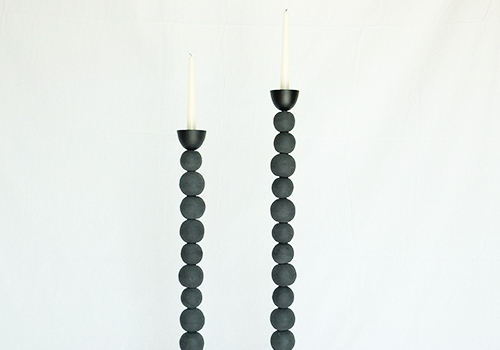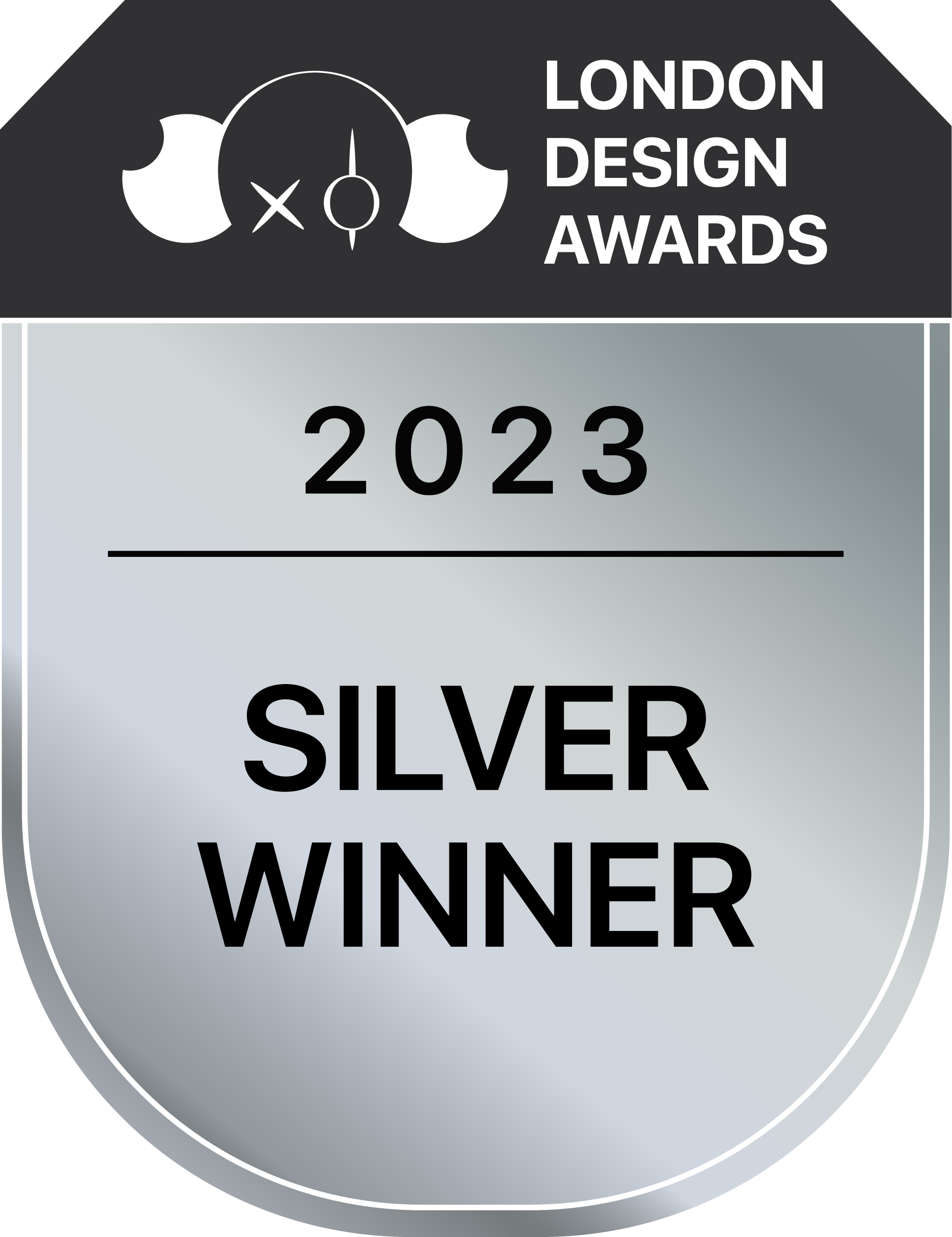
Anya Glik
1. Please give us a brief bio of yourself and your design background.
I have studied architecture at the Architectural Association in London where I got both RIBA Part I and Part II qualification and have graduated a year ago. Being part of such institution has definitely left a mark on me as a designer and generated curiosity for spatial and object research as a methodology to design. I have been working in different mediums over the past couple of years from photography to moving images to text to sound to objects and spaces.
2. What made you become/why did you choose to become a designer/artist?
I love the process. When you invent something in your head, draw it out on paper, figure a way to manufacture, work through prototypes and finally achieve a physical object that can be enjoyed not only by you but by everyone else. And this path from an idea in the head to something that you can already see and touch is what I really enjoy. What I like about designing is that you can literally create anything you want and by doing that you share with the rest of the world your point of view, your design language, your vision and thought process.
3. Tell us more about your agency/company, job profile, and what you do.
I am interested in creating objects that are a crossover between artefacts and function. I like the melange of the two together.
My methodology always starts from an already existing fabric, something from the past - be it a historical research, a found object, a particular texture, a particular feeling and then it becomes the first layer from which the design idea gets generated.
I am currently working on a series of objects that came to my mind in a particular church in Paris. And these objects are going to be a reinvention of a particular typology that existed and was utilised through different historical periods but through time it became quite rare, almost extinct. And what I am always excited about is taking a particular idea, reinventing it in a new way and putting it into the domestic fabric.
I like the crossover between the vernacular and modern. I am drawn to tactility and sensitivity of objects and spaces and this is something that I am trying to explore as a designer.
4. What does “design” mean to you?
I guess when you are an artist/designer, design becomes present in every aspect of life and in every part of the day. It is a particular way of thinking, particular way of seeing and a constant will to invent. It is something that nourishes you, inspires you but most importantly design for me is a necessity and expressing myself through designs is the language that I find more comfortable than any other one.
5. What’s your favorite kind of design and why?
I love designs that collide together ambiguity, playfulness and rigidity, monumentality and sensitivity, poetry and function, experimentation with proportions, materiality and practicality.
6. To you, what makes a “good” design?
Something that I personally value in design is a story and narrative of the object produced. Especially now in an era of fast mass production and fast generation of ideas, it is really nice to see designs that are very thoroughly thought through, the back story of an idea is an important fundament of the design
And then another important aspect is craftsmanship, focus on materials and on details, how things come together.
7. How did you come up with the idea for your award-winning design?
The idea came up from the research that I was doing at the time focusing on medieval candleholders and candleholders in the Renaissance paintings and the role of the fire as the main element and light source of the household. What I was really inspired by is the frequency of appearance of the candleholder in the paintings from 1400s and their position within the frame, always somewhere in the background, or on the table, always part of the drawn subject, part of the narrative. And even though today candles are not a frequent guest within the home or if it is, it is either a scented one that doesn
8. What was your main source of inspiration for this design?
There were two parallel inspirational threads during the design process. The first one being the texture of wrought and cast iron that was being used in candleholders manufactured in medieval period, this charred effect, the roughness of it. And the other inspiration came from the charcoal itself, its texture and colour, the form, ambiguity and variation. I wanted to combine playfulness with rigidity, chamotte hand crafted spheres and coated steel modular core/structure.
9. Do you think your country and its cultural heritage has an impact on your design process?
I was born in Moscow, Russia but moved to UK when I was 13 years old, meaning that I have spent half of my life in one culture field and another half in a completely different one. Having moved at a young age, the question of identity, belonging, cultural heritage is a frequent topic of conversation. It definitely has an impact on the design process, but it is hard to say to which extent.
10. Congratulations! As the winner of the London Design Awards, what does it mean to you and your company and team to receive this award distinction?
Thank you! I am very grateful for this award. It is very important to see where your product stands on the global arena. It gives a lot of motivation to create even more and to participate more in an international dialogue.
11. Can you explain a bit about the winning work you entered into the London Design Awards, and why you chose to enter this project?
This entered object is a modular steel and chamotte candleholder, it is a very important piece of mine as it is the first object produced post studying and it sets the tone for my practice and for me as a designer. And it means a lot to me to showcase it to a wider audience, get a response from the judges and see where the object stands today in the global design context.
12. What were the main challenges you faced during the design process, and how did you overcome them?
The main challenge was setting everything correctly within the ceramic department. It is not easy to get the right charcoal colour that would not be too glossy or too matt. In the process of working through the prototypes the ratio of ingredients within the angob glaze solution that we used was changed by the glazing manufactory, meaning that the whole recipe for the chamotte spheres had to also be rearranged. In order to create a variation in dimensions of the spheres but still do it in a methodical and controlled way, we had to create plaster moulds for 3 different dimensions. The art of controlled ambiguity. Overall It was a lot of trying and testing but at the end the texture, colour, shape, structure turned out just like I wanted.
13. How do you think winning this award will impact your future as a designer?
It is definitely a push to be part of the global design discussion and to create more.
14. What are your top three (3) favorite things about the design industry?
First of all - people. You start by getting an idea in your head but then when you get to execute this idea into a reality, you have to cross paths with a lot of talented professionals, manufacturers who help you along the way with their level of expertise. And you get to form a lot of trustful relationships along the way,
Second - it is always a learning curve. Working with new materials, getting to know new techniques and new possibilities of designing and making. It is always challenging and exciting.
15. What sets your design apart from others in the same category?
I guess it is the tactility and sensitivity of the design.
16. Where do you see the evolution of design industry going over the next 5-10 years?
It is definitely becoming very fast paced due to advancement in the ai technologies. I guess it will be much easier to develop and communicate your ideas visually. And even though the rhythm and mode of production will become faster, easier and accessible for general public / everyone, I still believe that true craftsmanship, careful, thoughtful and delicate ways of designing, attention to details and materials will be still very valued.
17. What advice do you have for aspiring designers who want to create award-winning designs?
When you get a strong impulse to design a particular object - just do it, do not leave the idea hanging in your head for too long, start developing the design, work through different prototypes and then you will get there.
Also don
18. What resources would you recommend to someone who wants to improve their skills in the design industry?
Learning 3D softwares is always very useful, it gives you freedom to visualise the product and alter it as you go. Also it gives you precision and possibility to achieve a product exactly how you modelled it.
19. Who has inspired you in your life and why?
Francois Truffaut, Robert Bresson, Andrei Tarkovsky, Isamu Noguchi, Vivian Maier, Peter Zumthor, Valerio Olgiati and many more + my mom, who is constantly creating, designing, inventing, she taught me to not be afraid of my ideas, my dad who taught me to always be adventurous and to branch out to many different disciplines, seeing the short movies that he made and poetry that he wrote really inspired me to express myself through different mediums.

